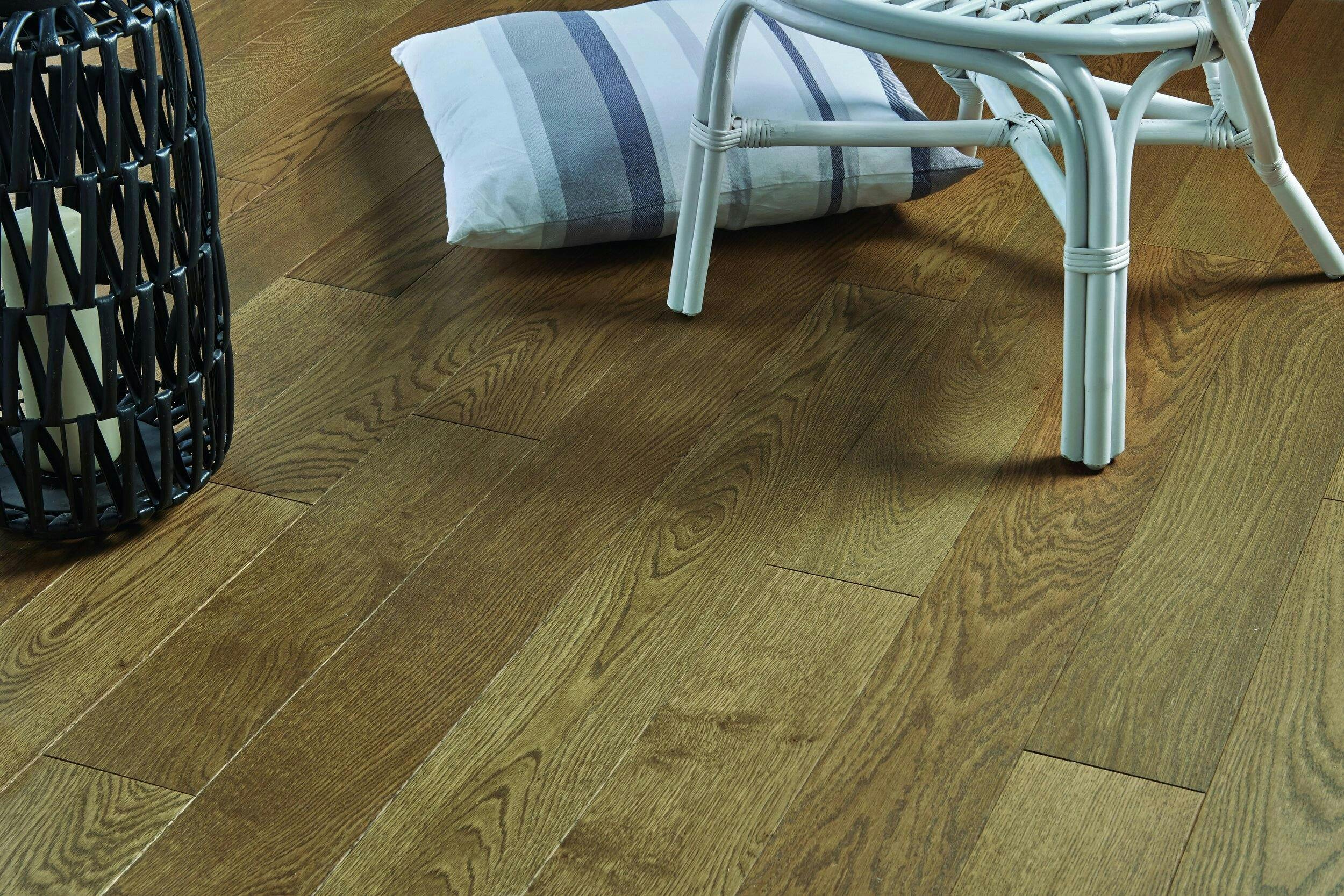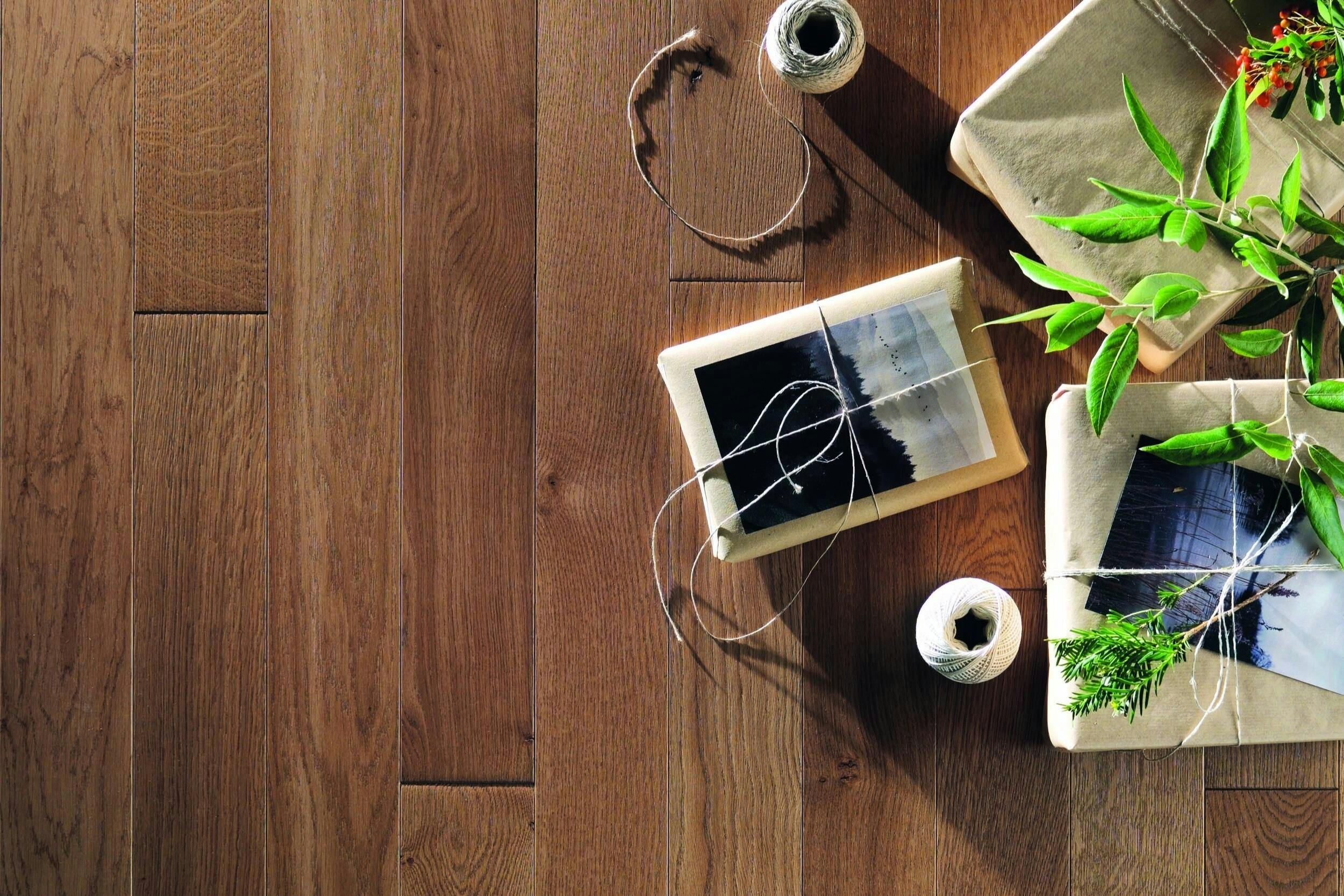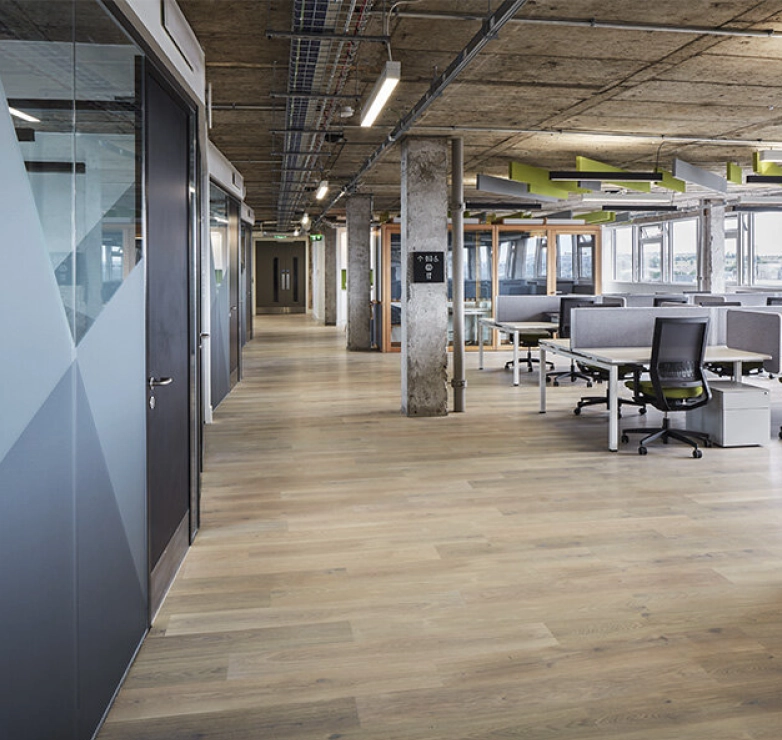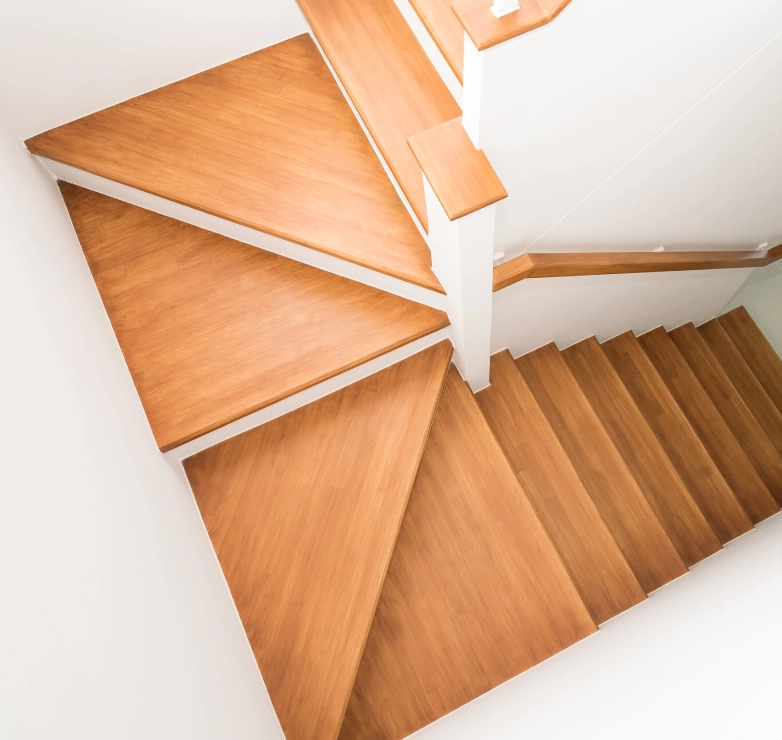What wood flooring textures are available?
There are four types of wood flooring textures available for you to choose from:
Smooth
This is not so much a texture as a lack of texture. A smooth wood flooring is pretty self-explanatory in its name where the floor has been sanded to make a smooth surface.
A smooth finish gives a uniformity to the appearance and feel of the flooring, and is typically used with high grade of wood and a glossy lacquer to produce a very “clean” looking floor. Occasionally, smooth floors can look unrealistic due the lack of knots and surface texture.
Reclaimed
As we move towards being a more eco-friendly and conscious society, this is the texture that will grow in popularity over the next few years.
Reclaimed wood flooring uses wood from old buildings or structures and repurposes it for use in new homes.
This method of recycling is not only great for the environment, but it also looks stunning and can really enhance the look and feel of any space.
The texture on this type of wood flooring is, as you would expect, a little battered and worn with dents and scratches which highlight that this wood flooring is old and has been previously used - and this is all achieved naturally.
It can work really well when renovating old Victorian and Georgian homes, especially those that use a lot of vintage furniture.
Aged and Distressed
Similar to reclaimed wood flooring, this wood appears to be old, worn and used highlighting the natural charm in the imperfections of the wood. The main difference, however, between aged and distressed wood flooring and reclaimed wood flooring is that this texture is achieved by carefully scraping and bashing the floor by hand or machines.
The wood itself may not genuinely be old, like reclaimed wood, but it appears that way and can be a great middle-ground for those who want new wood but still want to get the vintage look.
Brushed
Brushed wood flooring is where each board is treated with a wire brush to achieve deeper, more pronounced grains and making the wood a little more resistant to scratches. It exposes the natural charm and qualities of the wood giving it even more character and individuality.
This type of textured flooring works best in homes with a lot of natural woods where the aesthetic leans more towards traditional and classic.
Advantages of a textured finish to your wood flooring
The main purpose and benefit of a textured finish to wood floors is the visual appeal that it has which works well in almost any room and with any design.
It can provide your space with character, which could be considered more traditional and less of a trend look, meaning that it will never go out of style.
Textured finishes like brushed or distressed wood also look more natural and authentic than a smooth wood which could, ultimately, add value to your home.
Another major advantage is that you don’t have to worry as much about damaging your wood flooring and ruining the ‘perfect’ uniform look that you get with smooth floors. The dents and scratches that your floors will naturally incur can actually add to the effect and won’t even be noticeable on a textured wood floor.
This means less maintenance and less concern and worry about being cautious around your flooring; hence, you can live more freely in the space which is great if you have pets or children.





